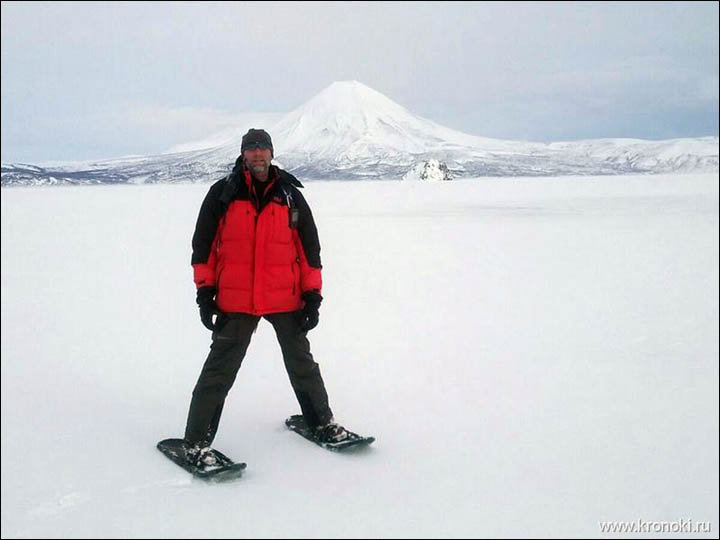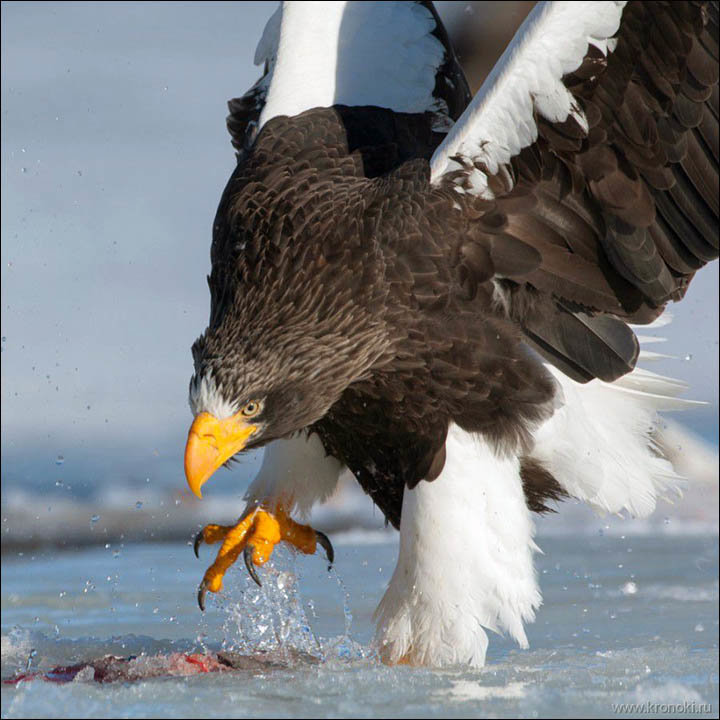
© Kronotsky State Nature ReserveKonstantin Lepsky, state inspector of the Kronotsky State Nature Reserve: 'When we patrolled the area, we walked along the lake in snowshoes for about 18 kilometres.'
With thermal waters, and the warming effect of the nearby Sea of Okhotsk,
this unusual lake normally does not freeze over. But this year its famous Steller's sea eagles have been forced to relocate because the ice holes in which they catch fish have frozen over
. Two weeks of calm weather and low temperatures in February - of minus 20C - shackled the surface of the lake with a thick layer of ice.Konstantin Lepsky, state inspector of the Kronotsky State Nature Reserve, said: 'When we patrolled the area, we walked along the lake in snowshoes for about 18 kilometres.
'From the observation tower at Travyanoy we looked around the horizon in all directions. The lake was completely frozen. Only in the mouth of the River Hakytsin could we see a little ice hole, where ducks and swans were swimming, and Steller's sea eagles were spotted.'
Most of the birds were forced to relocate to Avacha Bay, near Petropavlovsk-Kamchatsky. The lake formed in a caldera after two large volcanic explosions, one 41,500 radiocarbon years ago and the other around 6440 BC.

© Kronotsky State Nature Reserve'Only in the mouth of the River Hakytsin could we see a little ice hole, where ducks and swans were swimming, and Steller's sea eagles were spotted.'
It is the largest spawning ground for sockeye salmon in Eurasia, and a magnet for brown bears - as our pictures show.
The lake is a national wildlife preserve and a national monument. It is a UNESCO World Heritage Site among the world famous volcanoes of Kamchatka, also known as Russia's Land of Fire and Ice.





Reader Comments
to our Newsletter